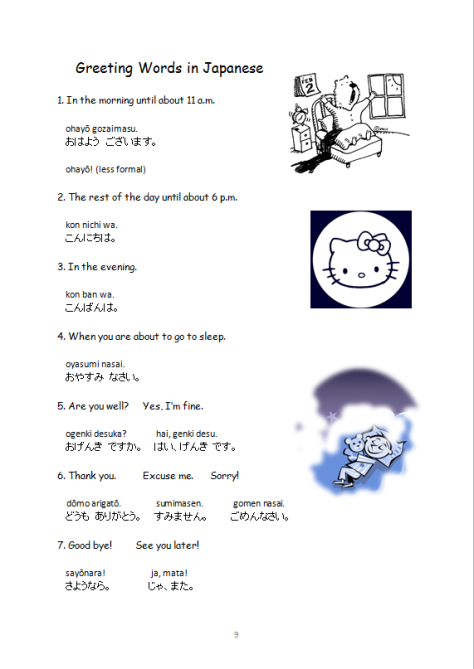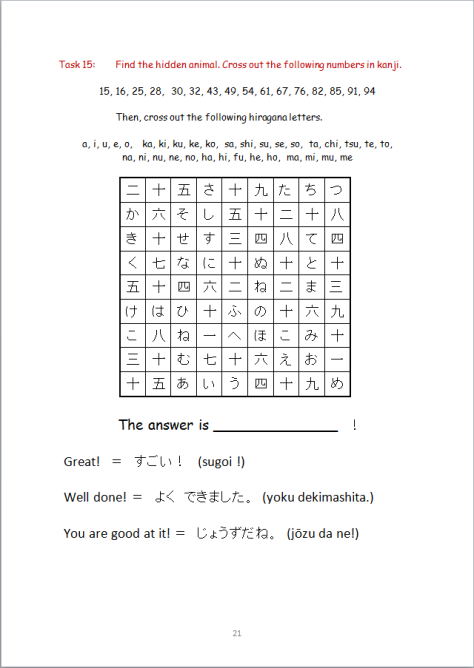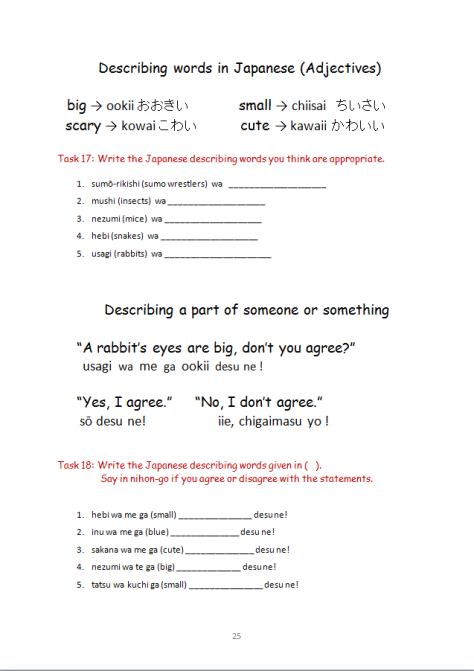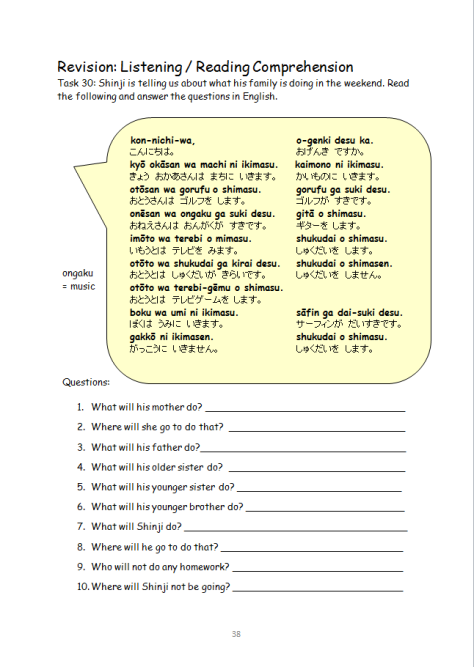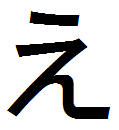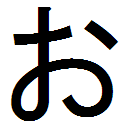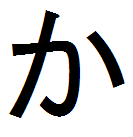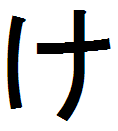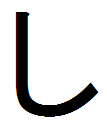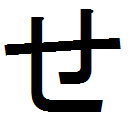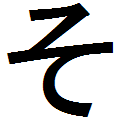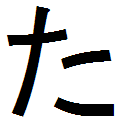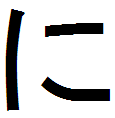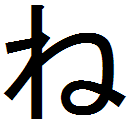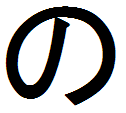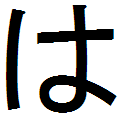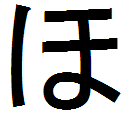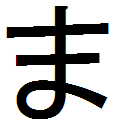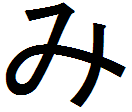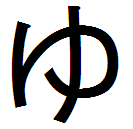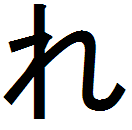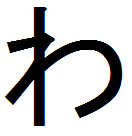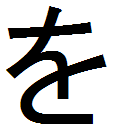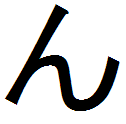This page is called ‘Easy Hiragana”, yet students must think it looks anything but easy. The problems that students experience have more to do with the English language, with the English alphabet and with a variety of pronunciations. Let us help you make sense of all this:
We have organised this hiragana syllabary on an English base: from left to right. Actually, Japanese would have done it from right to left (that is also how Japanese books are organised – from ‘the back to the front’). Anyway, the answers are still the same. All symbols are lined up on a vowel sound base. That is why hiragana is not ‘an alphabet’, but a syllabary. Each symbol represents a syllable.
The clearest way to demonstrate that is with a few examples:
In Japanese the vowels a, i, u, e, o as well as the final consonant n are regarded as a syllable: ho-n-da (= three syllables).
This system has been in use for students of the Japanese language for a good hundred-and-so-many years. That is why you recognise these five Japanese brand names so easily.
We have listed now all the hiragana symbols, each with a picture that may help you remember the hiragana. Keep in mind that the pictures are only an idea and have nothing to do with the origin of the Japanese script: our pictures are pure nonsense, but amusing. You need to also remember that the pictures correspond to the sound, not the English spelling of the word.
As far as pronunciation is concerned, Japanese sounds very much like a Polynesian language; absolutely nothing like Mandarin Chinese or Cantonese Chinese. The sounds are of an even tone, mainly short and crisp. Japanese is not a tonal language, although like English it does have intonation – a gentle stressing of sounds in order to gain emphasis. If you prefer, you could compare English words, but then the pronunciation is more like standard British English, certainly not like a standard West Coast American English. The pictures are intended to support the correct pronunciation:
Anyway, here goes – you soon get the hang of it.


the first hiragana sounds like the first sound in the word artist, or art, are, or after.
a more difficult one: the short い sound is represented by the letter i, but sound-wise it is closer to ‘ea’ in eat, or teapot, or the first ‘e’ as in even. The sound bite is short.
another difficult one: the short う sound is represented by the letter u, but sound-wise it is closer to ‘oo’ in hoop, or ‘ou’ in you, or even ‘oo’ in boo.
the short え sound is represented by the letter e, but sound-wise it is close to the first syllable ‘e’ sound of p-e-lican.
as in o-strich, or g-o-lf; nice and sh-o-rt.
now the vowels are established as short and crips, the next lines with consonants are easier – they are the same short syllable sounds.
the short か sound is represented by the letters ka, but sound-wise they are closer to the first letters ‘cu’ sound of cut, cutlery, current or curry.
this sound is represented by ‘ki’ as in monki (monkey).
sounds like cu-shion, or koo-kaburra.
easy: ‘ke’ as in keg, no two ways about it.
‘ko’ as in apple co-re, but shorter in sound length.
it sounds like summer, or samurai soldier, or even Sunday.
a short shee-p sound!
Su-e is expecting a baby.
if you don’t know what a settee is, think of se-nse, or
se-ntence. You may even know the Japanese word
sensei せんせい.
he plays so-ccer very well.
a ta-niwha is a Maori legendary monster.
What about ta-rget, s-ta-r or ta-rnish?
very chee-ky!
tsu-nami says it all.
te-ddy, te-nnis, te-st, te-nt say it all.
to-ps!
if na-chos don’t create the right sound, then s-na-rl may do it!
ni-nja are dangerous.
nu-dles – what more can we say?
nest, net, never, neck, nebulous.
that’s not no-ught! that’s no-nsense!
ha-rbour a wolf and ha-lf your pig problems.
sometimes the hiragana は in a sentence is pronouned ‘wa’. When that happens the meaning is は = wa, because it is a ‘particle’ – in fact the particle to indicate the topic of the sentence, the subject or the emphasized word.
you’re a hi-ppopotamus!
Mount Fuji
sounds like “who are you?”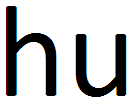
Great place to be: He-aven!
sometimes the hiragana へ in a sentence is pronouned ‘e’. When that happens the meaning is へ = e, because it is a ‘particle’ – in fact the particle to indicate direction in the sentence, towards a particular place.
Oh, ho-rror!
a ma-rch with ma-sks.
more mi-nis for my 21st! Yeah!
mellow.
mo-re or less a large mo-ray eel!
to tell a ya-rn while knitting.
Is this the w-ro-ng cutting level?









